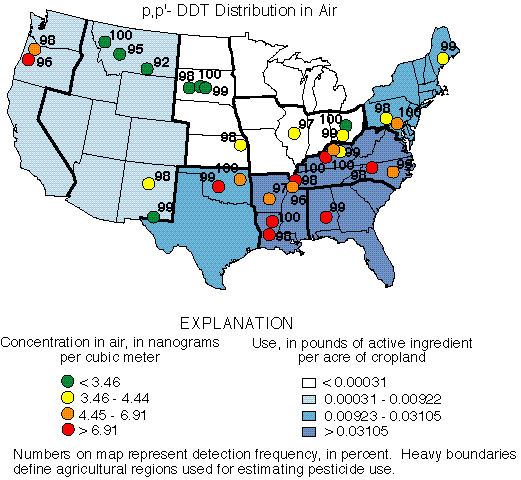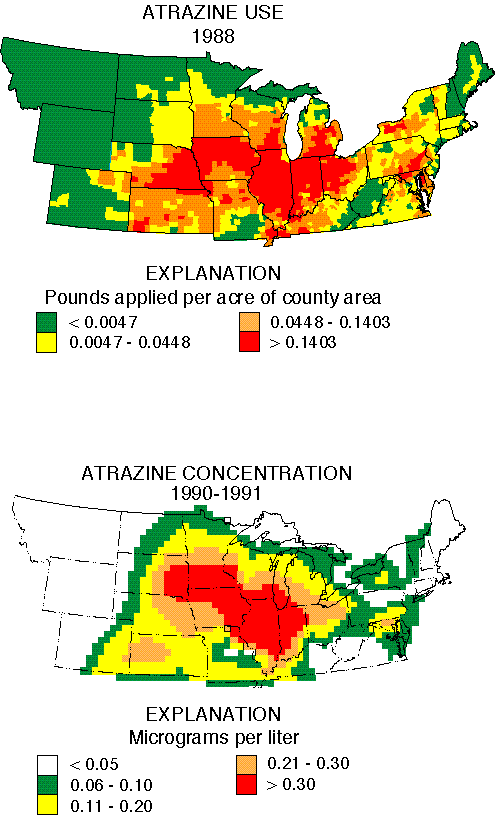Pesticides in the Atmosphere
U.S. Geological Survey, Fact Sheet FS-152-95
Geographic Distribution of Pesticides

Figure 5. Average air concentration and detection frequency per site for
p,p'-DDT compared to use on cropland in 1971.
It should be no surprise that the highest concentrations of pesticides
detected in air and rain occur in those areas where they are used
most frequently and in the highest amounts. Occurrence and
geographic distribution of pesticides in air and rain, and the relation
between the measured air concentrations, detection frequencies, and
national use were examined by comparing results from national and
multistate studies to national pesticide use patterns. National use
and air concentration data from the early 1970's show general
correlations among pesticides in the atmosphere and regional use
and cropping patterns. For example, the highest air concentrations
and most frequent detections of DDT generally occurred in
the highest use areas (see Figure 5). DDT was primarily used on
cotton in the Southeast and Mississippi delta states. It was also
used in the Appalachian and Southern Plains states on soybeans
and grains, and to a lesser extent on wheat, tobacco, and corn.
DDTs regional use corresponds with many of the high average
air concentrations at sites located in the Mississippi delta,
Southeast, and Appalachian regions. A more recent 1990-1991 study
of triazine and acetanilide herbicides in rain shows a much more
direct relation between use and observed concentration (see Figure
6).

Figure 6. Concentrations of atrazine in precipitation in the midwestern
and northeastern United States, mid-April through mid-July, 1990 and
1991, compared to atrazine use in 1988 (Goolsby and others, 1994).

